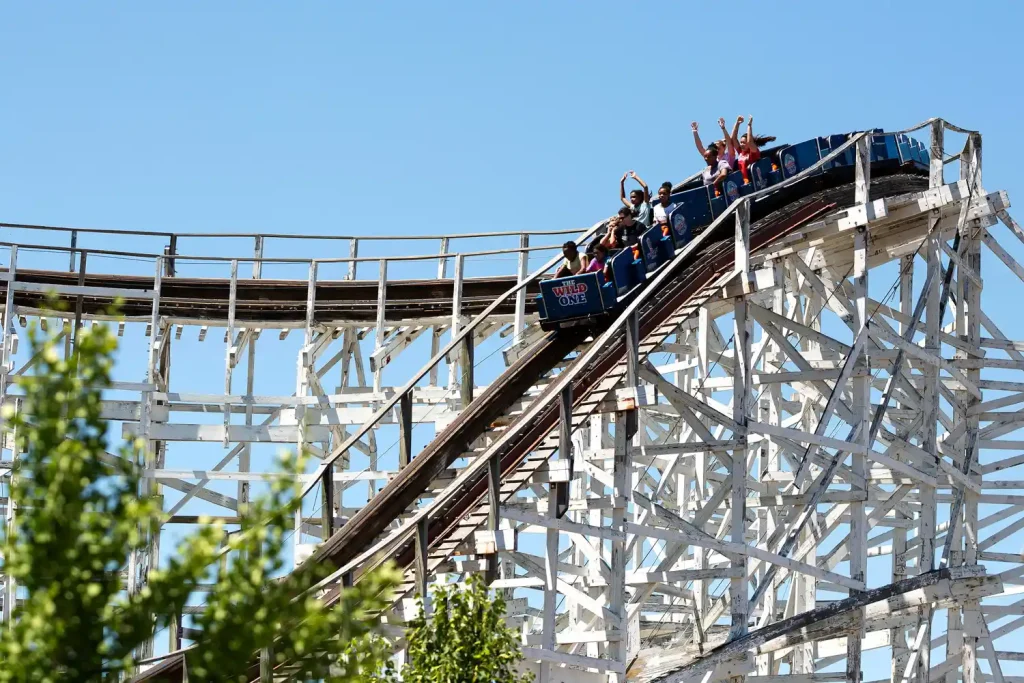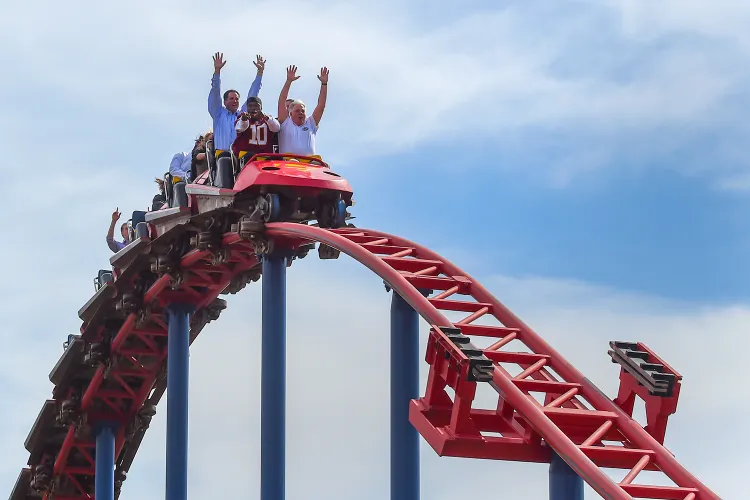Six Flags America Has Officially Closed Its Gates — Fans Wonder What Will Happen to the Beloved Roller Coasters and Water Rides After the Final Day
On Sunday, November 2, 2025, the laughter, the screams, and the sound of roller coasters cutting through the Maryland sky came to an end. Six Flags America, the 500-acre amusement park that stood for decades in Bowie, Maryland, officially closed its gates for the last time — ending an era that spanned generations. Along with its sister attraction, Hurricane Harbor water park, the beloved family destination that entertained millions since the 1970s now stands silent, its future uncertain and its rides hanging in limbo.

The closure, announced earlier this year, left fans shocked and emotional. For many across the D.C., Maryland, and Virginia region, Six Flags America wasn’t just another amusement park — it was a summer ritual. Families spent weekends chasing thrills, teens had their first jobs working concessions, and children experienced their first roller coaster rush on rides like The Joker’s Jinx and The Wild One. The park’s sudden farewell stirred a wave of nostalgia, questions, and heartbreak: what happens next? And what becomes of the rides that defined so many childhood memories?
According to park officials, Six Flags America and Hurricane Harbor officially closed “as part of a long-term strategic plan to focus resources on high-growth markets.” The decision, though business-oriented, has deeply personal consequences for thousands of visitors and employees. Over 70 full-time staff members and hundreds of seasonal workers are affected, and local officials are already discussing potential redevelopment of the massive property. But for coaster enthusiasts and fans of theme park history, the immediate concern is more specific — the fate of over 100 attractions that now sit idle.
Elizabeth Ringas, the president of the American Coaster Enthusiasts, told PEOPLE she remains hopeful that many of the rides will find new homes rather than being destroyed. “We’re hopeful the company will relocate some of the rides to other parks,” she said. “But at this point, we lack insight into which attractions will be saved.” Her comments reflect the uncertainty surrounding the dismantling process. Roller coasters and water rides, some of which have been operating for decades, are complex structures that require meticulous planning to move safely — and not every ride is built for relocation.
Industry experts say relocating rides depends heavily on their structure and condition. Smaller flat rides, family attractions, and modular water slides can often be transferred to other Six Flags parks across the country. But large-scale roller coasters, especially wooden ones, are a different story. “It can cost millions just to disassemble and transport one major coaster,” says a former Six Flags engineer. “Many of them are designed specifically for the terrain they sit on, which makes relocation nearly impossible.”

That’s why many fans are particularly worried about The Wild One, a century-old wooden roller coaster with a rich history. Originally built in 1912 at Paragon Park in Massachusetts, it was relocated to Maryland in 1986 and became one of the park’s signature attractions. Now, its fate hangs in the balance. For coaster enthusiasts, The Wild One isn’t just a ride — it’s a piece of living history, one of the oldest wooden coasters still in operation. Losing it, they say, would be like tearing down a landmark.
Six Flags’ corporate office has not provided details on which rides will be relocated, sold, or scrapped. What is known is that the company plans to sell the land and reinvest in parks with higher attendance and profitability. “Six Flags America has been a proud part of this community for decades,” a spokesperson said in a statement, “but this decision allows us to focus on creating world-class guest experiences across our strongest markets.”
The news hit the local community especially hard. Prince George’s County, where the park is located, relied on Six Flags for tourism, seasonal employment, and family entertainment. Edward Burroughs III, the county council chair, called the closure “a sad day for the community,” but also hinted at redevelopment opportunities. “We’re looking forward to what comes next — something that brings new energy, new business, and new memories to this area,” he said.
For visitors, however, no redevelopment can replace the memories made within those gates. On the final weekend, thousands showed up to ride their favorite attractions one last time. Some wore shirts from past seasons, others came with their children to share stories of their own childhood visits. One family, waiting in line for Superman: Ride of Steel, said through tears, “This was our summer spot. We came here every year. It’s hard to imagine Bowie without it.”
The final days of operation felt like a reunion — bittersweet but full of gratitude. Park employees handed out commemorative badges, and fans lined up for one last souvenir photo under the entrance arch. Even the most hardened thrill-seekers admitted that the last ride hit differently. “It’s not about the adrenaline anymore,” said one coaster fan. “It’s about saying goodbye.”

As for what comes next, several possible outcomes are on the table. Some rides may be relocated to other Six Flags parks — perhaps to Six Flags Great Adventure in New Jersey, or Six Flags Over Texas — where they can continue thrilling guests under new names. Others could be auctioned off to independent amusement parks, as has happened in past closures. Water rides may find their way to other Hurricane Harbor locations. But many older attractions will likely be scrapped due to high transportation and safety costs.
The emotional ripple effect of the closure extends beyond Maryland. For generations of East Coast families, Six Flags America represented more than entertainment — it was tradition. It was where friends gathered after school, where couples went on first dates, and where parents watched their kids conquer their first roller coaster fear. Losing it feels, for many, like losing a piece of home.
Even as the rides stand silent now, the echoes of laughter remain. The red tracks of the Superman coaster, the sound of water rushing through Hurricane Harbor’s lazy river, the smell of popcorn and sunscreen on hot summer afternoons — all of it has become part of collective memory. The thrill may be over, but its spirit lingers.
As the park’s gates close for good, Elizabeth Ringas and other coaster enthusiasts are calling on the company to preserve its legacy — perhaps by donating iconic ride cars or signage to museums or historical exhibits. “Theme parks are part of our cultural history,” she said. “They tell stories about who we were and what brought us joy.”
Whether the rides are relocated, repurposed, or lost, one thing remains certain: the magic they created cannot be dismantled. Six Flags America may be gone, but the experiences it gave — the wide-eyed wonder, the shrieks of joy, the first heart-pounding drops — will continue to live in memory. For those who spent their summers here, every amusement park they visit from now on will carry a touch of Bowie in its spirit.
In a world where progress often demands letting go, the closure of Six Flags America is both an ending and a reminder — that every scream, every smile, and every shared moment was worth the ride.


